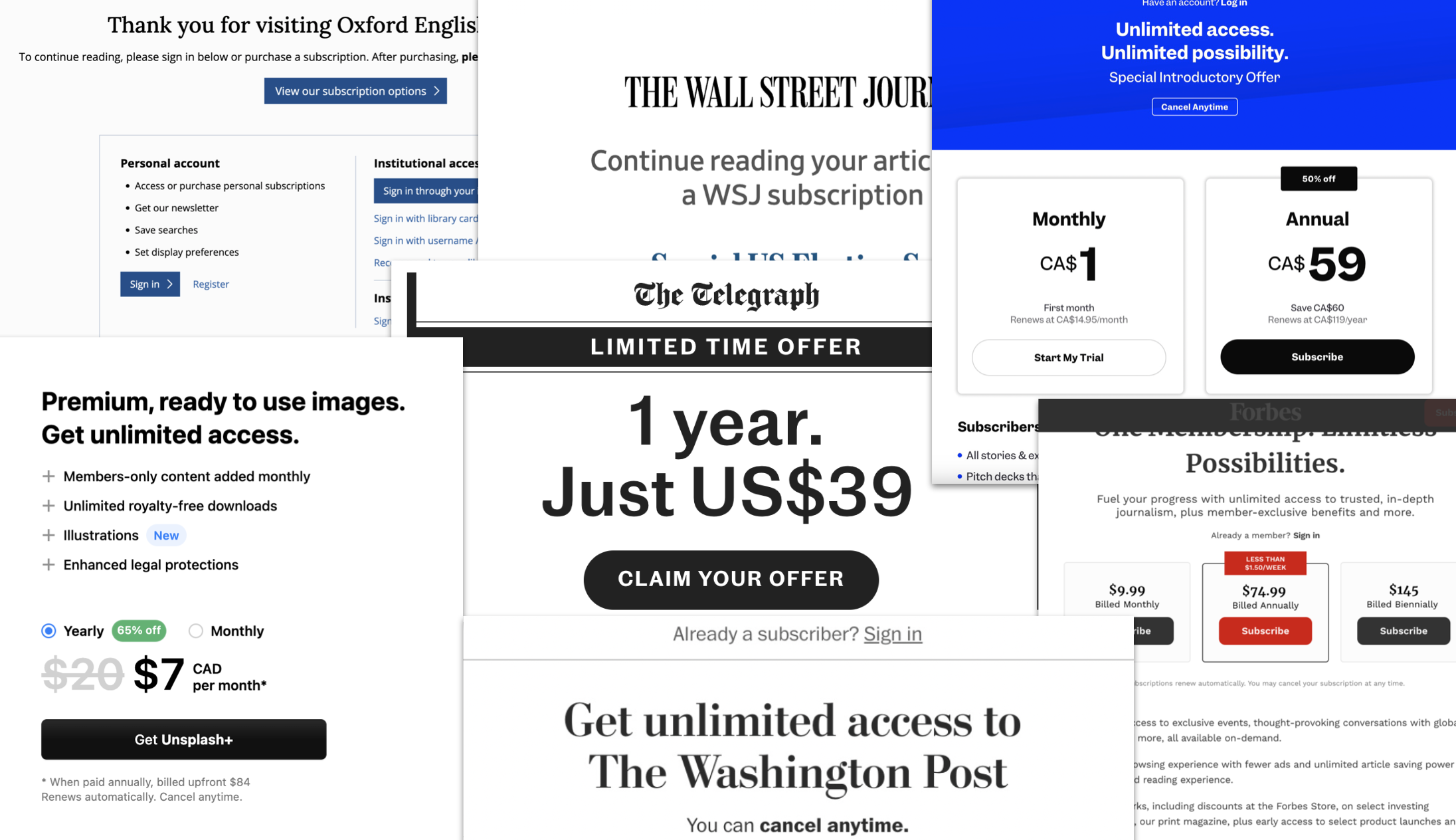The world is becoming subscription-centered and we’re allowed to hate it

Graphic by the Martlet.
Whether it’s weekly, monthly, or yearly, it seems like everything is becoming a subscription — and it’s starting to get out of hand.
Going beyond traditional internet plans, gym memberships, and streaming services, you can get almost anything in the form of a subscription now; from razors, socks, and candles to tea, hot sauce, and even succulents. Yes, succulents.
While some services are still available for free, like YouTube and Spotify, in order to get rid of constant advertisements you have to pay for a premium version.
One of the most frustrating subscription-based services is Microsoft 365. Beginning in 2013, Microsoft transitioned to a subscription-based software, which their website says “ushered in the age of bleeding-edge subscriber updates to everyone’s favorite productivity apps.” Individuals can access Microsoft 365 for $79 a year or $8 a month, allowing one user to sign into up to five devices. Families have the option to pay $109 a year or $11 a month for Microsoft 365 Family, which lets up to six people log in on five devices at once.
For $169, you can purchase a one-time Microsoft Office Home 2024 package, but it can only be installed on one computer for one user. This means it’s not transferable if you get a new device, and upgrades are not available.
More and more often, subscriptions are introduced after purchasing a product, which is even more frustrating.
In 2022, BMW was under fire for announcing a subscription for heated front seats in their vehicles. The proposed subscription would charge BMW drivers approximately $18 a month, with the options to subscribe for one year, three years, or $415 up-front for “unlimited” access. But after extensive customer backlash, BMW dropped this subscription in 2023.
Kindle Unlimited (KU), which is available for $9.99 a month, gives Kindle users access to over two million digital books. Kindle Unlimited is essentially a monthly library subscription that does not include the majority of popular titles or authors, and limits users to 20 titles at a time. Even though Kindle is an Amazon product, KU is not included in a Prime subscription. Although Prime Reading is included with Prime benefits, it has far fewer titles and only allows users to take out ten books as opposed to KU’s 20. Kindle Unlimited users do not own any of the titles they have read and, if they cancel their subscription, they lose access to any KU titles they have not otherwise purchased.
Ring cameras are another example of a company introducing subscriptions after their product is purchased. While Ring devices don’t require a subscription, without one you can only view real-time video and answer doorbell notifications. With Ring Protect Basic, their $5.99 monthly subscription service, you are able to review, share, and save videos and photos captured by the device. For $15 monthly you can opt-in for their 24/7 Alarm Professional Monitoring service.
We are even starting to see subscriptions within subscriptions. Amazon Prime is $9.99 per month, boasting a variety of services like Prime Video and Prime Music. However, Prime Video has numerous add-on subscriptions for additional monthly fees, limiting the number of titles available with Prime. There is even an option to upgrade to Prime Video Ad Free for an extra $2.99 per month.
A study by Hardbacon gathered responses from 516 Canadians over the age of 18. Asking respondents how many subscriptions they had, they reported four on average, but the actual number of recurring subscriptions was an average of eight.
In total, survey participants subscribed to over 180 different services. They also ranked the 50 most popular subscription services in Canada, with Amazon Prime, Netflix, and Costco taking the top 3 spots.
Over half of respondents in Hardbacon’s survey said they paid for a subscription they did not recall having. Over 70 per cent said they subscribed to a service during a free trial or promotional price and forgot to unsubscribe.
The complexities of canceling subscription services often deter customers from doing it, growing so frustrating with the process that they give up. Hardbacon’s study noted that 55 per cent of respondents delayed canceling their subscription because the cancellation process was too complicated.
Even while researching subscriptions and trying to read articles criticizing excessive subscriptions for this article, I was blocked repeatedly with advertisements for memberships from websites like The Washington Post, Forbes, and Business Insider. Knowledge and information should not be trapped behind a paywall.
Not everything needs to be a subscription, but they’re becoming increasingly difficult to avoid. Unfortunately, it seems like we might be stuck transitioning to a subscription-centered world.








